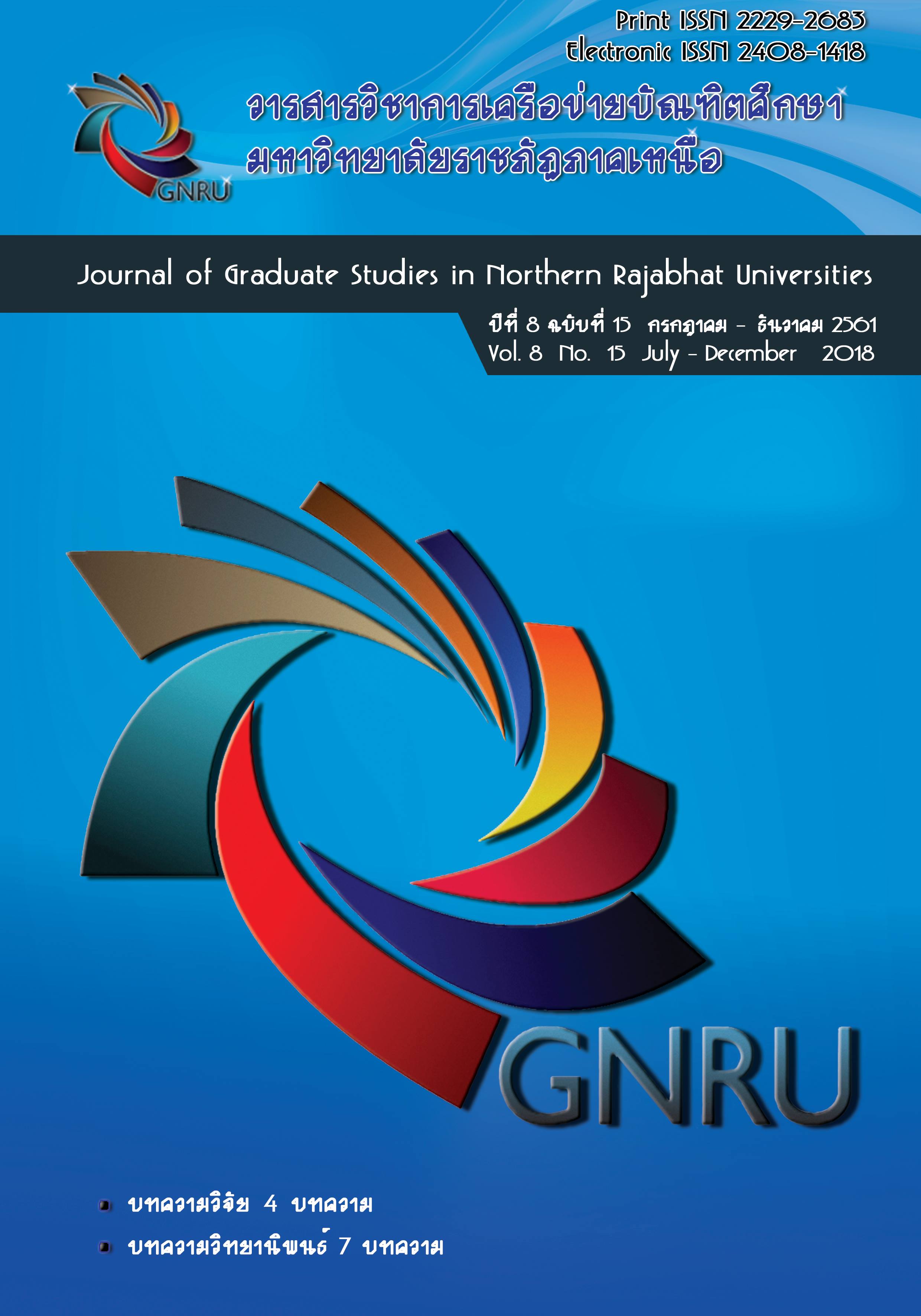การสังเคราะห์ความหมาย และองค์ประกอบของจิตนิสัยทางสะเต็ม STEM Habits of Mind; It’s Meaning And Component
Main Article Content
Abstract
การศึกษานี้มีวัตถุประสงค์เพื่อกำหนดความหมาย และนิยาม ความหมายองค์ประกอบของ จิตนิสัยทางสะเต็ม ทำการศึกษา ด้วยวิธีการวิเคราะห์เอกสาร จากการศึกษาทบทวนเอกสาร บทความ และงานวิจัยที่เกี่ยวข้องกับจิตนิสัยทางวิทยาศาสตร์ จิตนิสัยทางเทคโนโลยี จิตนิสัยทางวิศวกรรมศาสตร์ และ จิตนิสัยทางคณิตศาสตร์ เพื่อสังเคราะห์ความหมาย และองค์ประกอบของจิตนิสัยทางสะเต็ม จากนั้นจึงให้ผู้เชี่ยวชาญตรวจสอบโดยใช้ แบบสอบถามความคิดเห็นเกี่ยวกับความหมาย นิยามคุณลักษณะที่เป็นองค์ประกอบของจิตนิสัยทางสะเต็ม ทำการวิเคราะห์ความสอดคล้อง และปรับปรุงตามคำแนะนำของผู้เชี่ยวชาญ
ผลการศึกษาได้พบว่า จิตนิสัยทางสะเต็ม คือ คุณลักษณะการคิดของผู้เรียนที่เน้นการ บูรณาการความรู้ทางวิทยาศาสตร์ เทคโนโลยี วิศวกรรมศาสตร์ และคณิตศาสตร์ เพื่อนำไปใช้แก้ปัญหาในชีวิตประจำวัน มีคุณลักษณะที่เป็นองค์ประกอบ 6 ประการ กล่าวคือ 1) ความสนใจใฝ่รู้ 2) ความละเอียดรอบคอบในการตัดสินใจ 3) การคิดแบบบูรณาการ 4) การยอมรับในเหตุและผล 5) ความสามารถในการสื่อสาร และ 6) การสร้างนวัตกรรม
The purpose of this study is to clarify the definition and to identify the element of STEM habits of mind. The process of this study was consisted of 2 phase. Firstly, literature about scientific, technological, engineering, and mathematical habits of mind and the relevant literature, documents, article and researches were analyzed and compared to synthesize the definition and elements of STEM habits of mind. Second, the proposed definition and elements were evaluated by five experts using questionnaires.Then the definition and elements of STEM habits of mind were adjusted. The findings are as follows:
STEM habits of mind is the way of thinking that focuses on the integration of science, technology, engineering and mathematics to solve problems in the real world. The STEM Habits of Mind are composed of 6 features; 1) Curiosity 2) Carefully Making decision 3) Integrative thinking 4) Recognizing cause and effect 5) Communicative ability and 6) Innovative ability.
Article Details
References
มนตรี จุฬาวัฒนทล. (2556, พฤศจิกายน-ธันวาคม). สะเต็มศึกษาประเทศไทยและฑูตสะเต็ม. วารสาร สสวท, 42(185): 8-9.
สถาบันส่งเสริมการสอนวิทยาศาสตร์และเทคโนโลยี (สสวท). (2555). การวัดผลประเมินผลวิทยาศาสตร์. กรุงเทพฯ: ซีเอ็ดยูเคชั่น.
Callick, M., & Coll, R.K. (2012). Investigating Socioscientific Issue via Scientific Habits of Mind:Development and Validation of the Scientific Habits of Mind Survey. International Journal of Science Education, 24: 1909-1930.
Costa, A.L. (2000). Describing the Habits of Mind. In Discovering & Exploring Habits of Mind. Costa, A.L., & Kallick, B. pp. 21-38. USA: ASCD.
_______. (2008). Describing the Habits of Mind. In Learning and Leading with Habits of Mind. Costa, A.L., & Kallick, B. pp. 15-38. USA: ASCD.
Cuoco, A.L., Goldenberg, B.P., & Mark, J. (1996). Habits of Mind: An Organizing Principle for Mathematics Curriculum. Journal of Mathematics Behavior, 5: 375-402.
Gauld, C.F. (2005). Habits of Mind, Scholarship and Decision Making in Science and Religion. Science & Education, 14: 291-308.
Goldenberg, E.P., Shteingold, N., & Feurzeig, N. (2002). Mathematics Habits of Mind for Young Children. Retrieved April 20, 2015, from www.thinkmath.edc.org.
Loveland, T., & Dunn, D. (2014). Teaching Engineering Habits of Mind in Technology Education. Technology and Engineering Teacher. 73: 13-19.
Marzano, R.J. (1992). A Different Kind of Classroom: Teaching with Dimension of Learning. Alexandria: ASCD.
Matsuura, R., Sword, S., Piecham, M.B., Stevens, G., & Cuoco, A.L. (2013). Mathematics Habits of Mind for Teaching: Using Language in Algebra Classroom. The Mathematics Enthusiast. 10(3): 735-760.
Microsoft. (2017). 21st Century Skill Collaboration. Retrieved July 15, 2017, from www. innovativeteachertoolkit.com/links/collaboration.html.
Resnick, L.B. (1999). Making America Smarter. Retrieved June 10, 2015, from www.edweek.org.
Royal Academy of Engineering. (2014). Thinking Like an Engineering Implication for the Education System. Retrieved October 20, 2015, from www.raeng.org.uk/think.likeengineer.
Shawn Callahan; Mark Schenk; & Nabcy White. (2009). Building a Collaborative Workplace. Retrieved October 20, 2015, from www.fullcric.com.
Stoner, J.L. (2015). What is Collaboration and Where Does it Begin?. Retrieved December 1, 2015, from https://seapoincenter.com.
The National Academy of Engineering (NAE). (2010). Standard for K-12 Engineering Education?. Retrieved March 15, 2015, from www.nap.edu.
Tishman, S. (2000). Why Teach Habits of Mind?. In Discovering & Exploring Habits of Mind. Costa, A.L., & Kallick, B. pp. 41-51. USA: ASCD.

